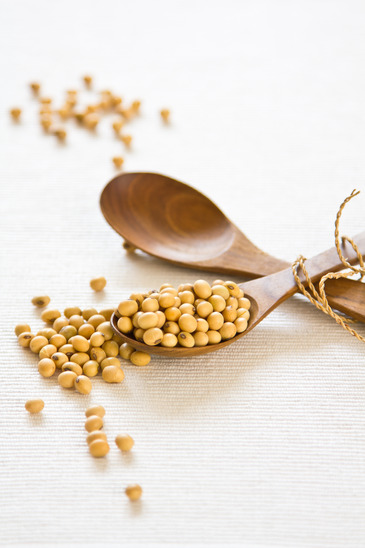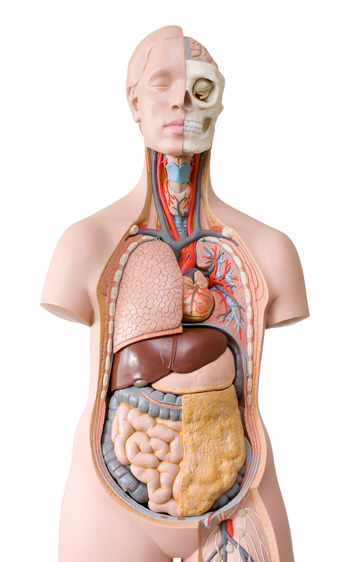When you think of cancer-fighting foods, typically the kind of things that come to mind include green tea, leafy greens and even garlic. But according to a study published in the Canadian Medical Association Journal, there could be a new contender to this list: soybeans.
Originally native to Southeast Asia and used for more than 5,000 years, soybeans are considered to be a legume and part of the pea family. Small, inconspicuous and surprisingly tasty, soybeans have always been revered for being high in protein but low in saturated fat. There are also a great source of fiber and essential antioxidants, vitamins and minerals.
But researchers from the Cancer Hospital of Harbin Medical School in China have found one more benefit of this delightful bean.
The magical bean
The study followed 524 women who had suffered breast cancer and experienced breast cancer surgery, for five to six years. It was found that by adding at least 42 milligrams of isoflavones (derived from soymilk, tofu and soy flour) to the diet of postmenopausal women daily, the associated recurrence of cancer decreased by 33 percent.

In a study published in Food Research International, it was also discovered that soybean meal can notably decrease the affected cell growth in colon cancer (by 73 percent), liver cancer (by 70 percent) and lung cancer (by 68 percent).
Other research notes a link between soybean consumption and a decreased risk of prostate cancer. Soybeans have also been linked to weight loss support, protection against heart disease, a reduction in blood pressure and cholesterol levels and symptom relief from osteoporosis and menopause.
Considerations
It is important to note that although soybeans appear to have health benefits, these studies are relatively premature. The majority of soybeans in North America are genetically modified, and genetically modified foods have been linked to cancer. Countries in Asia, like China where the aforementioned study took place, consume organic soybeans.
Incorporating soybeans into daily life
In the real world, 42 milligrams of isoflavones might sound unreasonable. But it’s actually easier than you’d think. To consume 42 milligrams of isoflavones you can eat half a cup of cooked soybeans or one-third of a cup of soy flour. Soybeans taste great when added to soups, curries, casseroles and even salads. Soy flour is a great replacement for wheat flour in common recipes. Other great sources of soy include:
- Tofu, which is derived from the combination of soybeans, a curdling agent, and water. Commonly used as a meat replacement in sushi meals, it can also be used in salads, soups and stir-fries.
- Endame are green soybeans that can be found in Japanese restaurants and consumed as an easy and tasty snack.
Other ideas include using pasta that is with soy protein, trialing soy breakfast cereals, and soy yogurt.
And then? Well, you can sit back and enjoy a delicious meal that offers an array of health-promoting and cancer-fighting benefits.
Please note: some individuals can be allergic to soy and soy products. If you experience any itching, difficulty, breathing, faintness or dizziness after consuming soy, please see your trusted medical practitioner immediately.
Organs You Can Live Without

Have you ever wondered if all those bits and pieces inside your body were truly necessary? Gold star if you have, because you’re actually right. It turns out that there are parts of the body that are quite superfluous. In fact, you can even live without them.
Here are the top nine organs you can live without:
- Tonsils: Tonsils are the most popular (or at least the most common) part of the body that is removed. Tonsils primarily act to protect our body from bacteria. But modern technology has allowed medicine to do the same function so damaged tonsils can easily be removed.
- Kidney: Your kidneys take care of removing toxins from the body as well as regulating urine. It’s a tough job though and they can easily become infected. The good news is that there are two of them, and studies have shown that you can survive and lead a normal life with just one. There are even cases where individuals have survived without both kidneys, they just required dialysis.
- Colon: Typically, the colon is removed when an individual suffers from colon cancer or Crohn’s disease. Traditionally this meant that they would have to use an exterior bag (normally carried outside of their body) to collect their stools. There is now an operation available that works to insert a ‘pouch’ in the small intestine so a bag is not required. In both cases however, living without a colon is manageable.
- Spleen: When the spleen becomes damaged (through either cancer or another disease or an injury), it can be safely removed and to a large extent, the liver takes over the spleen’s responsibilities. However, removal of the spleen does decrease immune function and requires regular vaccines.
- Appendix: Experts believe that removing the appendix serves far greater benefits than keeping it in the body when it is damaged or diseased.
- Uterus: The headquarters for baby making, the uterus is both an essential part of a woman’s body and surprisingly removable. While removal of the uterus eliminates the possibility of menstruating and childbirth, it is an area of the body that we can at least physically do without.
- Stomach: According to the experts, the whole stomach can be safely removed (usually to treat stomach cancer) and has limited impact on the long-term health of the individual.
- Lung: It turns out that you can remove one lung without significantly influencing your quality of life. While intense exercise will become out the question, it doesn’t influence day-to-day tasks.
- Gallbladder: The gallbladders’ main function is to take care of the bile in order to support healthy digestion. When it is removed (normally due to painful gallstones), the liver compensates by taking over the bile process and directing it into the intestines.


